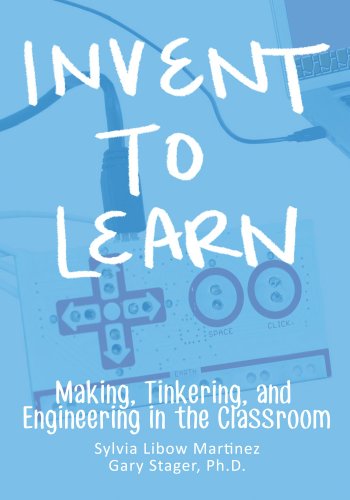Invent To Learn: Making, Tinkering, and Engineering in the Classroom Link to heading
Authors: Sylvia Libow Martinez and Gary S. Stager
Summary Link to heading
“Invent To Learn: Making, Tinkering, and Engineering in the Classroom” is a groundbreaking educational resource that advocates for integrating making and tinkering with traditional classroom learning. The authors argue that hands-on activities and project-based learning encourage deeper engagement and understanding among students. They draw on the principles of the Maker Movement to inspire educators to adopt practical, inquiry-based approaches to teaching STEM (Science, Technology, Engineering, and Mathematics) subjects.
The book provides a historical context of progressive education theories and connects them with today’s technological advancements. It explores various tools and technologies like 3D printers, programming, and robotics, emphasizing their potential to revolutionize the educational experience.
Review Link to heading
The book has been well-received for its innovative approach to education, merging traditional pedagogical theories with modern technological opportunities. Its strengths lie in its practical guidance and its ability to inspire educators to rethink their methods. However, some critiques highlight the challenge of implementing these ideas in classrooms with limited resources or support. Additionally, the rapid pace of technological change might render some specific technologies mentioned in the book outdated.
Key Takeaways Link to heading
- Emphasizing Hands-On Learning: Engaging students in making and tinkering activities fosters creativity and critical thinking.
- Integration with STEM Education: The use of modern tools can make STEM subjects more accessible and exciting.
- Historical Perspective: Understanding past educational theories can inform current and future teaching practices.
- Empowerment through Education: Students gain self-reliance and empowerment by engaging in project-based learning.
- Collaboration and Sharing: The book advocates for collaborative learning environments where teachers and students share knowledge.
Recommendation Link to heading
This book is highly recommended for educators, administrators, and policy-makers interested in innovative and progressive education methodologies. It’s particularly valuable for those looking to incorporate maker projects and technology into their curricula, as well as for anyone involved in STEM education. Its focus on hands-on, experiential learning makes it a useful resource for adapting teaching methods to better engage the current generation of students.
